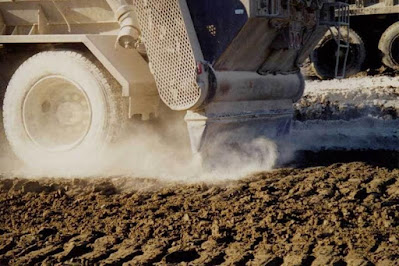Lime Kiln Dust Market Continues To Grow Further With Robust Demand In The Agriculture Sector As Well As Construction In Both Developed And Emerging Economies
The lime kiln dust commonly found in the kilns and smoke chambers of most kilns is made up of lime, water, salt, and ash. The water used is often from underground springs. After the ashes have been fired in the kilns the water drips into the kilns through a drain line and is evaporated into the air. The lime and water mixture cools very quickly making it very hard to move the solid matter into the molds. Kiln owners find it very difficult to remove all the dust from the kilns and so they have to leave some of the kiln mud inside. This is known as sludge. As far as regional impact is concerned, Asia Pacific seems to be gaining major traction in the lime kiln dust market. This is typically due to increasing production of LKD in China, India, and Japan. Besides, North America is exhibiting promising signs with significant production of LKD in the U.S.
One of the primary applications of lime kiln dust or LKD is in the agriculture sector. LKD is typically used in the soil-liming and soil conditioning process. As a matter of fact, LKD can offer significant enhancement to soil properties, in order to reduce swelling as well as plasticity potential. Furthermore, soils treated with LKD have exhibited high strength gain. As per the India Brand Equity Foundation (IBEF), in FY 20, Indian agriculture, forestry, and the fishing sector were valued at US$ 276.37 billion. Therefore, such factors could potentially stimulate growth of the lime kiln dust market.
A great advantage of the lime kiln dust from the industrial sector is that it reduces the need for synthetic fertilizers and herbicides that are commonly used in the agricultural sector. The lime produced is a natural bio-degradation of the forest residue. These forests are often felled at a rapid pace to clear the way for agriculture. The residue, however, often contains lime deposits that have to be handled and leached out. Despite these advantages, certain factors associated with LKD could potentially limit market growth. Although LKD is not carcinogenic, the dust may contain small amount of crystalline silica, which is being listed as carcinogenic by several regulatory bodies. Thus, such factors can potentially inhibit growth of the lime kiln dust market.
Another critical factor accelerating growth of the market happens to be the wider application of LKD in soil drying. As the soil dries out, it leads to lime decreasing the soil moisture content and increasing the soil’s optimum moisture content. Such properties of LKD have increased its demand in the construction industry, typically in the rainy season or in places where the land is marshy & wet and not suitable for construction activities. Hence, such factors could potentially augment growth of the lime kiln dust market.




Comments
Post a Comment